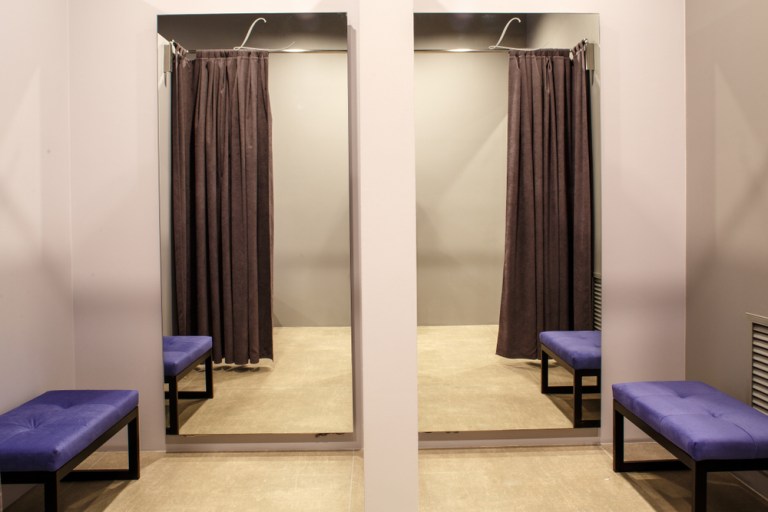
Most of the differences consumers will notice involve fitting rooms – or the lack thereof. The National Retail Federation (NRF) guidelines allow individual retailers to decide whether to reopen fitting rooms. It cautions its members that “if you decide to open them,” fitting rooms should be cleaned prior to any customer use and sanitized afterward. It also recommends that customers use hand sanitizer before trying on items and to wear protective masks during fittings. The NRF even goes so far as recommending steaming any clothing items after they have been tried on, and to return them to the sales floor only after a waiting period.
MySize has developed a contactless shopping feature for its MySizeID app. When using the smartphone app in-store, customers can find their accurate size by scanning a QR code or barcode and can also make a contactless purchase. The app, which is brand-specific, is based on a turnkey solution that helps any merchant’s customers choose the appropriate apparel size based on the shopper’s real measurements.
“These are unprecedented times, and the coronavirus is making touch-free shopping a necessity,” noted Ronen Luzon, CEO of MySize. “We believe there will be a long-lasting shift in shopping behavior once the quarantine restrictions are lifted and consumers are allowed to shop in stores again.
One of those shopping behaviors will be contactless transactions, as consumers will try to restrict what they touch in stores. As more and more retailers open back up, they will need new technology solutions to coax shoppers back into their stores. This provides another layer of safety, not only for the consumer, but also for the store associates. We look forward to launching this feature in-store with our retail customers.”
According to fashion trade magazine Glossy, Kohl’s, Gap, Urban Outfitters and Target will be closing all fitting rooms and restrooms when they reopen. For the retailers who are keeping fitting rooms open, like Saks Fifth Avenue, clothes that are tried on are being cleaned and taken off the sales floor for 24 hours before being put back on display.
“The occupancy you can have in a store is a lot lower than before,” Suitsupply Founder Fokke de Jong told the magazine. “We are lucky because our stores are pretty big, but it’s still a reduced capacity. Something we’ve been doing is offering co-browsing, where customers can video chat with sales associates before they come in and pick out clothes they want to try, and we can get the clothes prepared so they’re ready when the customer comes in. Our business is high-touch, so we’re looking for any ways to make it safer and easier, and to minimize contact.”
Of course, eCommerce is the ultimate fitting room workaround, and fashion retailers have recovered on that front. Although March saw a 30 percent drop in worldwide eCommerce revenue, new findings from Nosto show that April’s online clothing sales were an average of 21 percent higher than the same period last year. Visits to online apparel websites have risen an average of 9 percent globally, while orders rose by 30 percent and conversion rates saw a 12 percent lift.